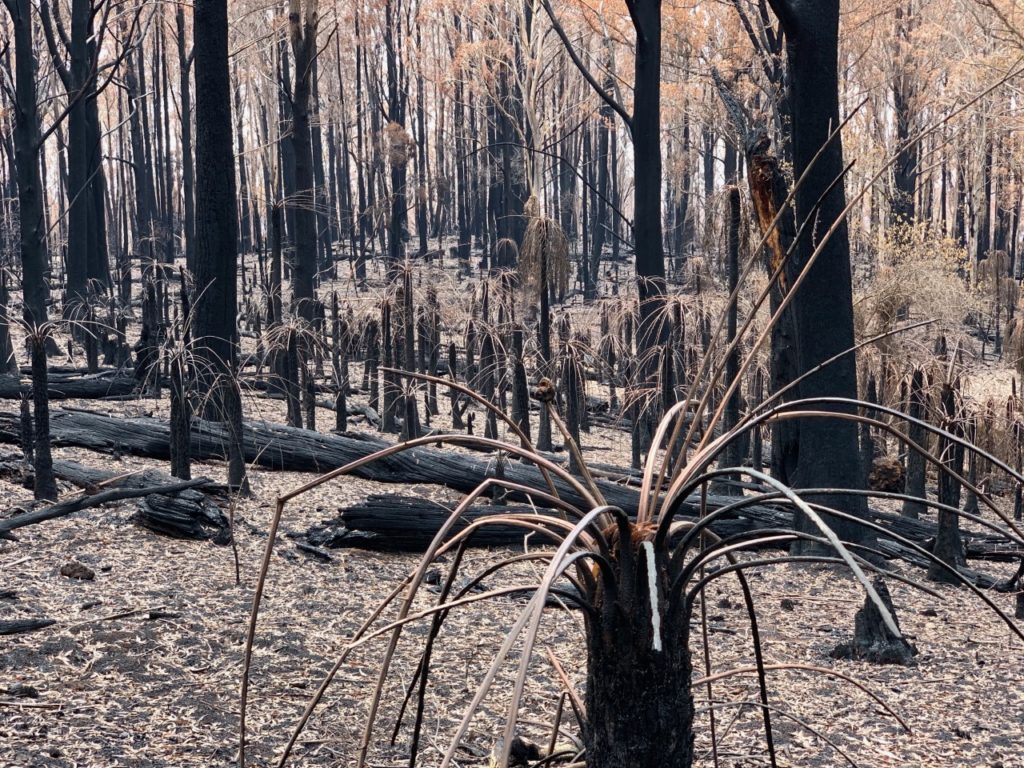Protected Magazine
Integrating Climate and Biodiversity Action
Sadly, we are all too familiar with the profound challenges facing Life on Earth.
Past overuse, conversion, degradation, fragmentation and pollution have resulted in ecosystem decline and collapse in many biomes – threatening the survival of up to one third of Earth’s insects, the productivity of agricultural systems, the livelihoods and well being of millions of people and the survival of 1 million other species that form the web of life we call the biosphere and on which we all depend (IPBES 2019). Climate change exacerbates these problems, making it urgent to protect and restore biodiversity and ecosystem integrity cross the globe.
Greenhouse gas emissions continue to climb. The impacts of 1.1 degrees of warming on people and nature are at the upper end of predictions. Floods, storm intensity, pests and disease, drought and fire are all clearly increasing as a result of climate change and reaching unprecedented levels across the globe.
We face a stark imperative to deliver urgent and transformative change in the way we live and our economic and political priorities.
But, while recognition is growing that climate change is having an adverse impact on biodiversity and ecosystem integrity, there is much less awareness of the impact of biodiversity loss and related damage to ecosystems on climate change.
The feedback loops between the climate and biodiversity crises are only just starting to be understood by decision makers. There is more carbon stored in natural ecosystems than in fossil fuel deposits so reducing current and future risk of emissions from them is critically important. Loss of biodiversity, fragmentation and damage to natural and agricultural ecosystems, increases the actual and future risk of, GHG release to the atmosphere. Damaged ecosystems store far less carbon, less securely than undamaged ecosystems. And, allowing degraded natural ecosystems to recover sequesters more carbon faster and more securely than replanting.
Thanks to recent shifts in international policy, we have an important opportunity to educate domestic decision makers on the superior climate mitigation and adaptation benefits of integrating climate and biodiversity action. The UNFCCC recognized this when it called for integrated action to prevent biodiversity loss and climate change at COP 25 (decision 1.CP25 para 15 ); as did the CBD at COP 14 when it expressed concern that escalating destruction, degradation and fragmentation of ecosystems “would reduce their capacity to store carbon and lead to increases in greenhouse gas emissions, reduce the resilience and stability of ecosystems, and make the climate change crisis ever more challenging” (decision CP 14/21).
International calls to break down the silos between the UN Climate and Biodiversity Conventions are being heard and took a major step forward in June this year with the first ever joint workshop of the IPCC and IPBES, the respective scientific advisory bodies to the UNFCCC and UNCBD.
The workshop did more than add to the already stark warnings about the damage being done by human activity to the health of the biosphere. It concluded that many of the root causes of climate change and biodiversity loss are the same, that each crisis amplifies the other and unequivocally stated that neither crisis can be solved unless both crises are tackled together. The good news is that many of the solutions to both crises are also the same.
Notably, the workshop concluded that preventing further loss and damage to and restoring, carbon and species rich natural ecosystems are urgent priorities for integrated climate and biodiversity action.
Another report commissioned by the UK Government and released this year also helped draw international attention to the seriousness of the biodiversity crisis for our economic well being.1
The urgency of reversing the trajectory on biodiversity loss and ecosystem degradation is acknowledged in the latest draft of the CBD post 2020 biodiversity framework which includes targets of: increasing protection to 30% of land and sea areas through ecologically representative and well connected systems of protected areas and other effective conservation measures; ensuring that at least 20% of degraded freshwater, marine and terrestrial ecosystems are under restoration that strengthens connectivity; and conservation action that contributes at least 10GtCO2e per year to global climate mitigation efforts through ecosystem based approaches that support mitigation and adaptation.
Maintaining and restoring ecosystem integrity is essential if we are to meet the challenges facing humanity – whether climate mitigation and adaptation, biodiversity protection, human health and well-being or climate resilient sustainable development.2
Protected Areas, Connectivity Conservation and Other Effective Conservation Measures are increasingly understood to be important mechanisms for delivering holistic improvements to the outlook for climate, nature and people.
Preventing the spread of zoonotic disease and improving the quality and quantity of ecosystem services, including long term and relatively stable carbon sequestration and storage are enabled if policies encourage integrated climate and biodiversity action and incentives are provided to improve land use practice and conservation management of natural ecosystems.
An important opportunity exists in Queensland to protect and restore some of our most important carbon and species rich ecosystems and deliver integrated climate and biodiversity outcomes with the future of the native forest sector of the timber industry once more under discussion.
The climate mitigation benefits of allowing previously logged forests to recover to their biological potential are superior to planting new trees, both in terms of the amount of carbon able to be sequestered at a landscape scale in climate target timelines of 2030 and 2050 and in terms of higher resilience and stability and lower risk of loss from pests, disease, drought and fire. It is surprising how many people confuse the rate of carbon sequestration (highest in young forests) with the amount of carbon able to be sequestered in forests (highest in older forests). The bigger the tree the more carbon there is stored in it and the bigger the canopy the greater the sequestration potential. 3, 4
Maintaining existing forests and woodlands, is critical for both protecting carbon stocks and fostering continuing carbon uptake. 4,5,6,7,8.
Degradation associated with roads, industrial development and logging increases the vulnerability of forests to drought, fire, pests, disease and climate change. 8
Maintaining and restoring forest ecosystem integrity is essential to maximize resistance to and resilience in the face of, increasing threats from climate change.
Allowing biodiversity at all levels to recover in native forests improves ecosystem integrity, stability, resilience and adaptive capacity and increases forest resistance to pests, disease, drought and fire – threats that will increase with climate change.
Completing the transition began decades ago out of native forest logging and improving the protection, restoration, connectivity and conservation management of our native forests would provide a major opportunity to (a) immediately prevent substantial GHG emissions from logging; (b) sequester 30-70% additional carbon from the atmosphere by allowing forests to grow past their logging age and reach their biological potential; (c) prevent further loss of habitat for wildlife and enable long term habitat and wildlife recovery; (d) improve forest ecosystem resilience, stability and adaptive capacity; (e) improve the quality of all ecosystem services notably carbon storage and water quality; (f) reduce fire risk and severity (see www. Bushfirefacts.org Report no.3); (g) improve the health of catchments; (h) improve recreational and associated business opportunities; and (i) provide opportunities to improve the mental and physical health and well being of us all.
Western Australia recognized these benefits from ending native forest logging just a few weeks ago. The decision by the McGowan Labor government to rapidly end native forest logging and support the long term future of the timber industry by investing in purpose planted trees on farms, recognized the benefits for wildlife, climate mitigation and local communities.
Its past time Queensland followed suit by living up to the legacy promised by the Beattie Labor government of supporting a plantation based timber industry, allowing our native forests to heal and enabling local communities to thrive.


